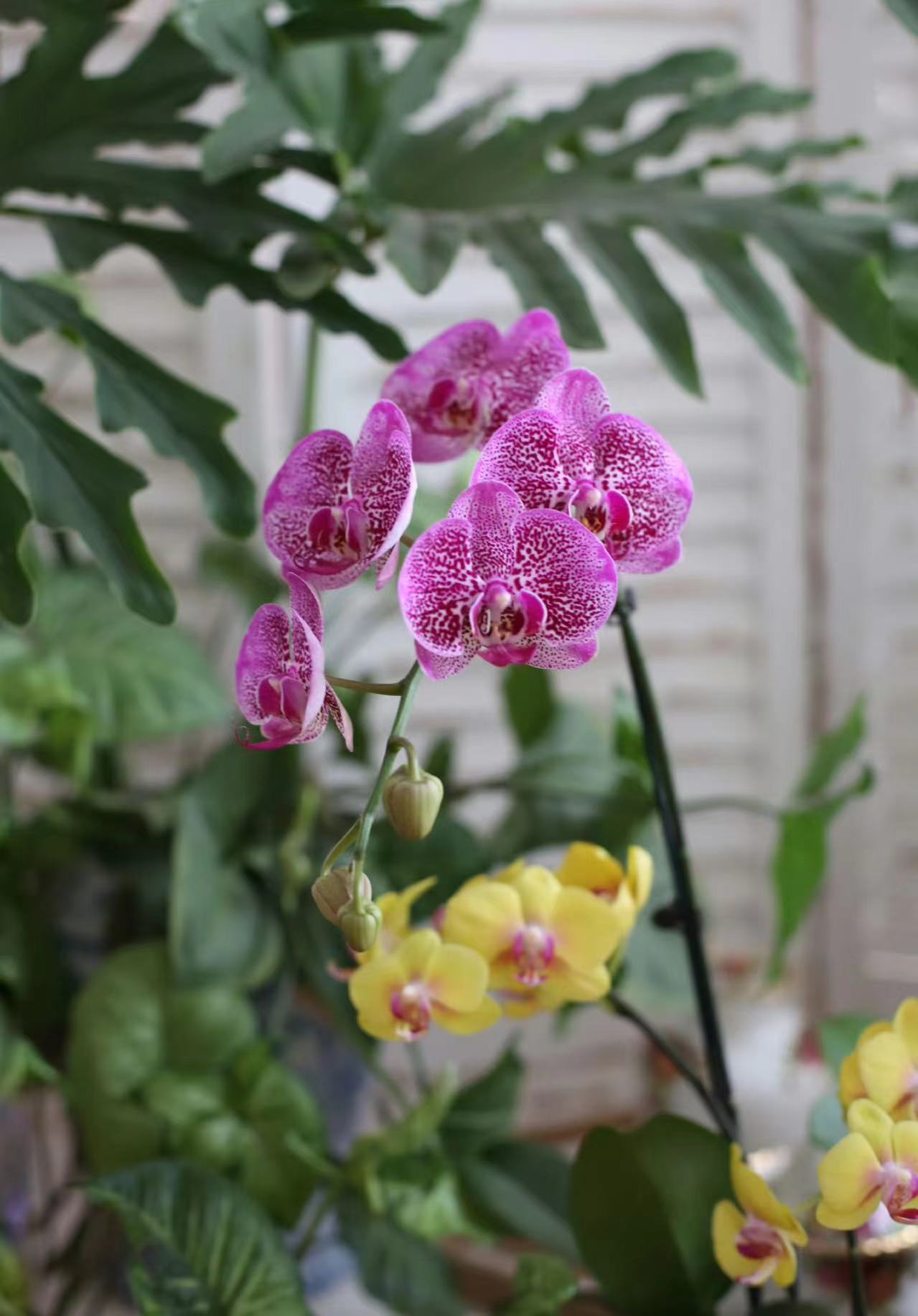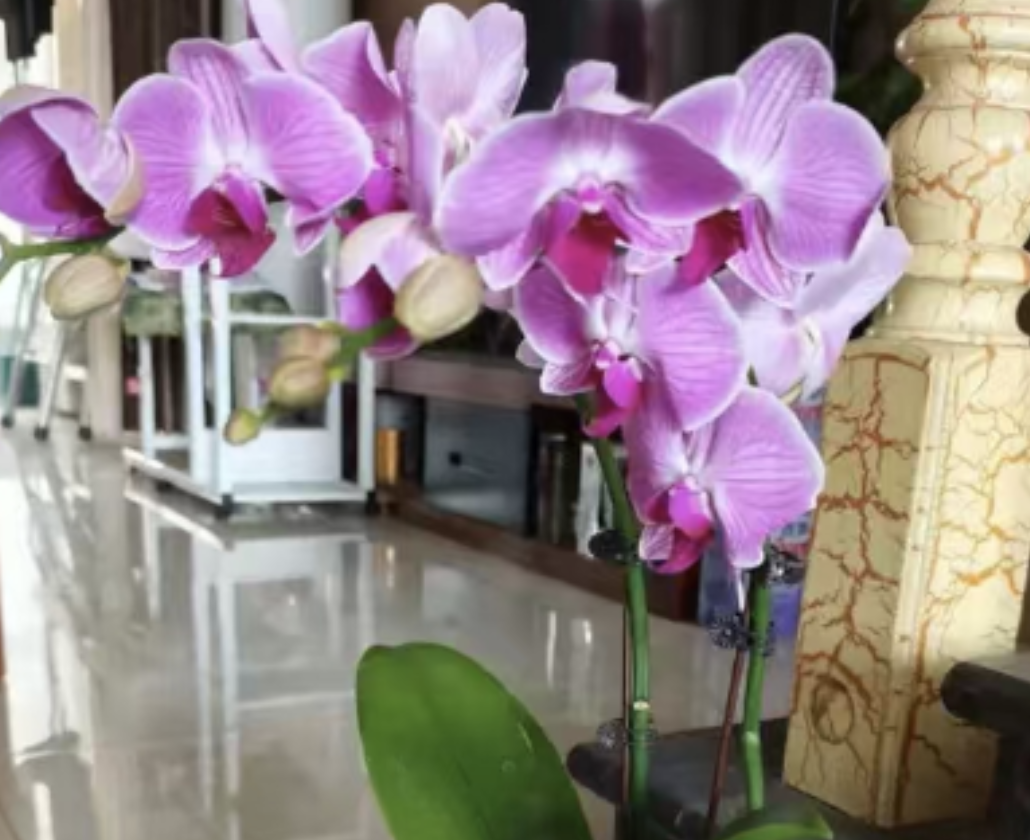Phalaenopsis is native to tropical and subtropical regions and likes an environment of high temperature and high humidity. During the growth process, it has certain requirements for aspects such as light, temperature, humidity, and nutrients. Understanding these growth habits will help us better force spikes and promote the growth of spikes.
The suitable growth temperature for Phalaenopsis is between 18°C and 28°C. During the spike forcing period, the nighttime temperature can be appropriately reduced and maintained between 15°C and 18°C to form a certain temperature difference. A large temperature difference can stimulate Phalaenopsis to differentiate flower buds and thus grow spikes. Phalaenopsis likes scattered light and avoids direct strong light.
During the spike forcing period, the lighting time can be appropriately increased, but direct sunlight should be avoided. Phalaenopsis can be placed near a bright window or artificial light sources can be used for supplementary lighting. Generally speaking, giving Phalaenopsis 12 to 14 hours of lighting time per day is more appropriate. Phalaenopsis has a high demand for water, but during the spike forcing period, watering should be appropriately controlled. Keep the soil slightly moist and avoid excessive watering that leads to root rot. Whether to water can be determined by observing the dryness and wetness of the soil. Generally, water when the soil surface is dry.
During the spike forcing period, the application amount of phosphorus and potassium fertilizers can be appropriately increased. Phosphorus and potassium fertilizers can promote flower bud differentiation and the growth of spikes. You can choose special fertilizers containing phosphorus and potassium elements and fertilize according to the requirements of the instructions. Generally, fertilizing once every 10 to 15 days is sufficient.
Methods to promote spike growth
Phalaenopsis likes a high-humidity environment. You can increase air humidity by spraying water and placing a humidifier, etc., and maintain it between 60% and 80%. At the same time, maintain good ventilation to avoid the occurrence of pests and diseases.
When the spike of Phalaenopsis grows to a certain length, it needs to be supported. You can use materials such as bamboo sticks and iron wires to make supports and fix the spike on the support to avoid the spike from lodging.
During the growth process of the spike of Phalaenopsis, some side branches and small flower buds may appear. In order to ensure the growth of the spike and the quality of the flowers, these side branches and small flower buds can be pruned in time.
Phalaenopsis is easily invaded by pests and diseases during the growth process, such as aphids, red spiders, powdery mildew, etc. Regularly check the growth of Phalaenopsis, discover pests and diseases in time and take corresponding prevention and control measures. Pesticides can be sprayed or biological control methods such as introducing natural enemies can be used.
During the process of forcing spikes and promoting spike growth, pay attention to proceeding step by step and not being in a hurry. Excessive intervention may have adverse effects on the growth of Phalaenopsis. When fertilizing, pay attention to not having too high a concentration to avoid burning the roots. At the same time, avoid fertilizers directly contacting the leaves and flowers of Phalaenopsis. When supporting the spike, pay attention to not using too much force to avoid damaging the spike. When preventing and controlling pests and diseases, choose safe and effective pesticides and use them according to the requirements of the instructions. At the same time, pay attention to protecting the environment and avoid causing harm to humans and other organisms.
How to force spikes on Phalaenopsis?

Share with
Tagged in :




Leave a Reply